10 amazing stories from the "life" of the Brooklyn bridge
Categories: Design and Architecture | History | North America
By Pictolic https://pictolic.com/article/10-amazing-stories-from-the-life-of-the-brooklyn-bridge.htmlThe Brooklyn bridge is much more than just an amazing architectural structure. This part of US history. And yet, this American monument was the subject of many stories — sometimes inspiring, sometimes tragic and sometimes crazy.
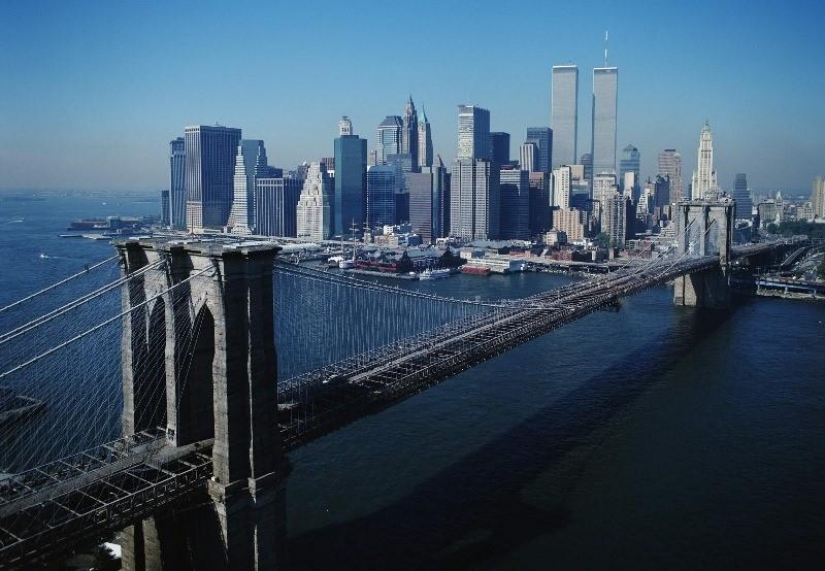
Winter 1867
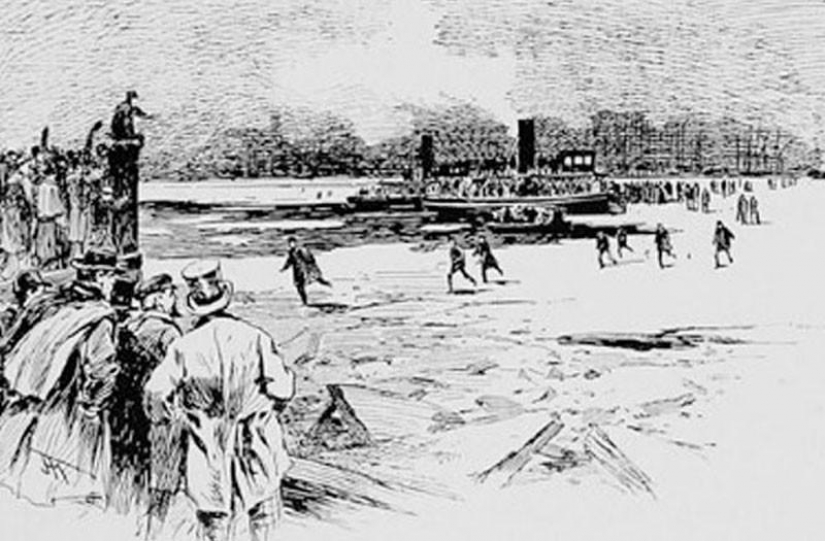
In 1867, new York was very different. There was no skyscraper "Chrysler building", Yankee stadium, the "Naked Cowboy" and, most importantly, it was not the five boroughs. Until 1868 Brooklyn, Queens and Staten island were separate small cities, fully separated from the Big Apple. Many people still worked in Manhattan, what sometimes created problems for the residents of Brooklyn. If you want to get from Brooklyn to Manhattan, you will have to cross the East river. Then there was no bridge, so people crossed the river on ferries. All was well, but occasionally in the winter the river froze. Water covered by a layer of ice at least five times from 1813 to 1857. The last straw was freezing 1867. Ships stuck in the river, and people had to slide on the ice all the way to work. It became apparent, especially for those who do not know how to ride a skate that someone should build a bridge.
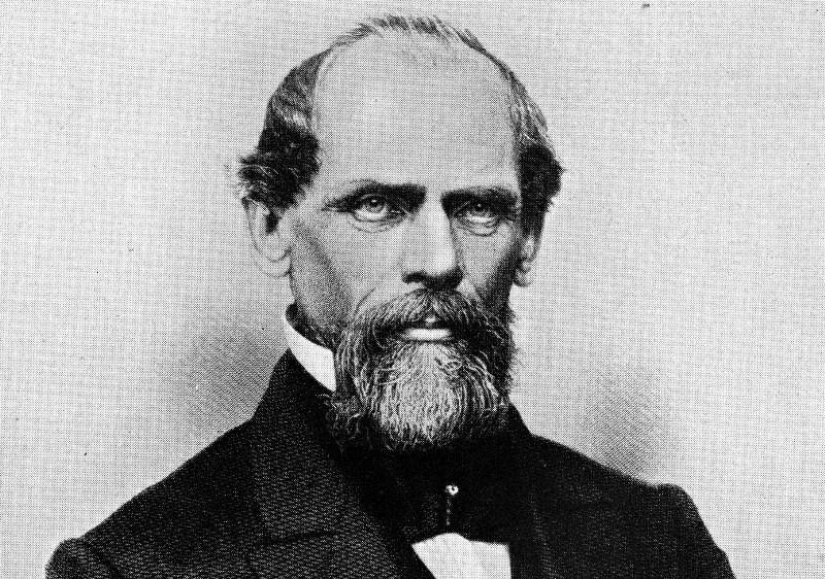
The German-born engineer John Roebling hatched a plan to build a suspension bridge before the winter of 1867. Boats could pass freely on water under the bridge, suspended by sturdy ropes. To begin construction it was necessary to bribe, and after the Senator of the state of new York Henry Murphy paid the corrupt politician William Tweed, Roebling got busy making drawings and selection of materials. But the Roebling never finished the Brooklyn bridge. In fact he had not even started. One day in 1869 he became interested in the viewing of the compass, and his leg suddenly got stuck between the deck of the ferry and the waterfront. Leg was badly pinned, the bones were broken. This forced the doctors to amputate his fingers. The surgery didn't work and after a few days John August Roebling slipped into a coma and died of tetanus. Work on the construction of the Brooklyn bridge passed to his son, Washington Roebling.

As well as his father, Washington Roebling was a master of construction. During the Civil war, he built bridges for the Union army and later helped his father with Cincinnati-Kovingtonskoy bridge. He was in the forces, this task, although it was difficult. The first phase involved the construction of two towers on the solid rock. Workers had to be in the water to Wade through mud and lay a granite base. The solution was not very fun. Roebling decided that his team will be working inside of caissons — giant wooden boxes submerged under water by using granite blocks. Pressurized oxygen was constantly pumped inside to the workers, which were called "sand hogs" could breathe during the excavation and demolition works. As you may have guessed, it was all very dangerous. The caissons were full of compressed air, and the builders worked with dynamite and gas lamps. This could cause a catastrophe, and in some cases fire. On top of that it was stuffy, from-for what the workers had a headache and was bleeding from the nose. These "sand hogs" earned two dollars a day. Fire was dangerous, but the threat was caisson disease. She appeared suddenly, workers began a severe pain in the joints, wild convulsions, and vomiting. And even worse: sometimes they were paralyzed. Victims of decompression sickness were more than 100 people, several people were killed and many were disabled. Things were especially bad in the side of the tower side of Manhattan. When the workers dug up the rock to 2 metres, Roebling decided that life is more than money. He withdrew the workers, deciding that the soil is strong enough to hold the tower. Fortunately, he was right. Workers all day breathing compressed air, so when they swam up to the surface, they have not had time to adapt to new conditions. The sudden reduction of pressure caused by bubbles of nitrogen that dissolved into their blood and tissues, caused severe pain. Today we call it as decompression sickness. One of the victims of decompression sickness was Washington Roebling. The man in charge of the construction of the Brooklyn bridge, suffered two debilitating attack and left partially paralyzed. "Sand pigs" needed a new boss.
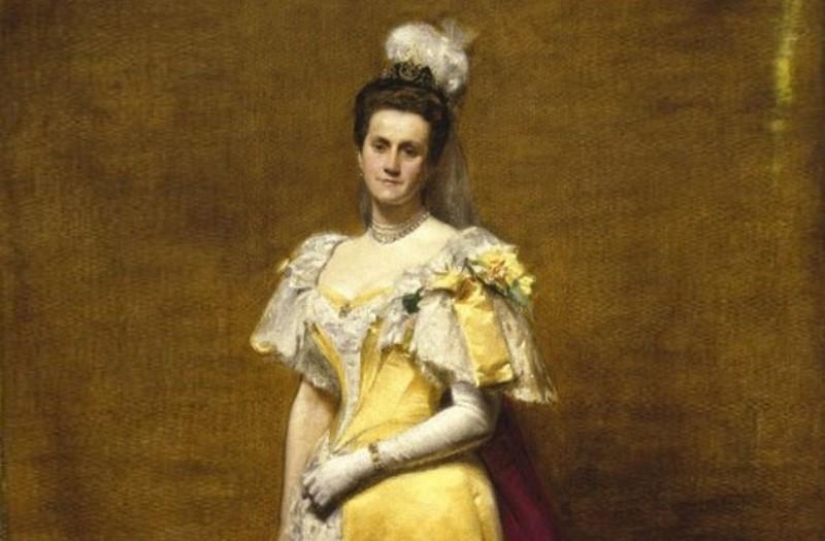
There was a feeling that the Brooklyn bridge is doing everything to spite Roblingen. And John and Washington during the construction have received heaps of dead or wounded. Paralyzed and partially blind, deaf and dumb, Washington could only watch the construction of a bridge from my bedroom window with binoculars. But his mind was in perfect order, and the team needed directions. And then in the history of the Brooklyn bridge appeared Emily Warren Roebling. They met at a military dance and married in 1865, after which she immediately plunged into the world of construction. Already planning the bridge, her father-in-law had sent to Washington to travel the world to learn more about the caissons. Emily went on and received a good education in the field of bridge building. And when John died and Washington became the new boss, she learned everything there was to know about the technique. More than anything, she wanted to help her husband with a new job. When John became ill, she became his messenger. She regularly visited the construction site, giving people instructions John and solving all the questions. Over time, the role Emily started to change. Soon employees began to consider it as a new boss, and as her knowledge and confidence increased, she actually became the chief engineer. She met with officials, held discussions with the engineers and trained workers. When the American society of civil engineers has decided to replace John, she made a passionate speech in defense of her husband. The Committee were worried and decided to leave him and Emily at work.
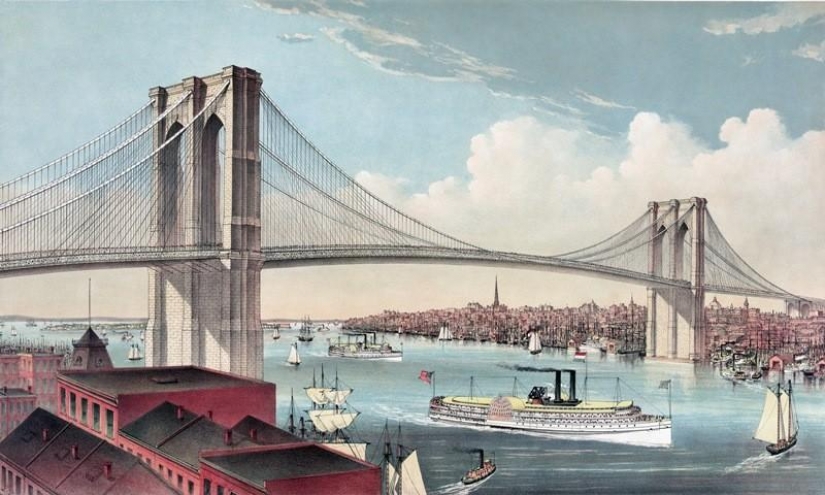
One of the most iconic structures in new York near the Empire state building and the Statue of Liberty. The Brooklyn bridge is a vivid example of engineering art of the XIX century. He stretches 483 meters across the East river, and its total length is 1814 meters. Even today, the 84-meter-high pillars, rising above the water — an impressive sight. If these codes don't impress you, look at the road surface, which rests on steel cables with a diameter of 40 centimeters, each of which consists 5434 separate wires. This bridge strong enough to withstand 145 000 vehicles every day.
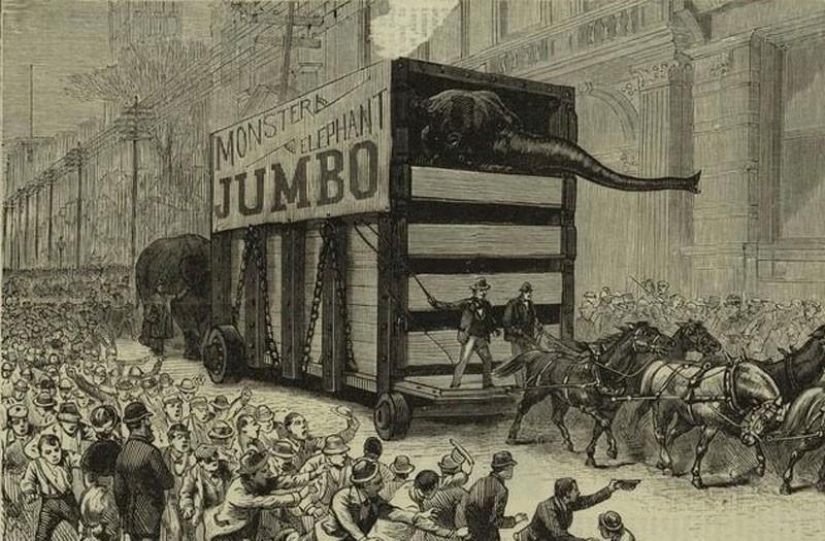
The bridge cost the city about $ 15 million and took the lives of 27 people. In addition to decompression sickness, some unlucky workers were crushed by falling equipment. One worker died, being struck down to break the cable. As 30 may, just a few days after the inauguration, the tragedy happened again. Undoubtedly, the bridge at the time was a miracle of modern technology, but it just hung over the river as it passed the people, horses and carriages. So when one woman accidentally tripped and someone panicked and shouted: "Bridge collapses!", in the ensuing chaos, 12 persons were crushed to death and 35 were injured. In the hope to calm everyone down, authorities turned to P. T. Barnum. The head of the circus "Barnum&Bailey" belonged to one of the most iconic animals on the planet — the elephant Jumbo. Barnum proudly said that Jumbo is the largest of known animals, and the city authorities wanted to, he led the procession across the Brooklyn bridge. In search of free advertising Barnum jumped at the opportunity. May 17, 1884, he led a large parade from Brooklyn to Manhattan. The March was attended by 21 elephant, and they were followed by 17 camels. In the end he was the African elephant Jumbo increase of 3.5 meters and a weight of 5.5 tons. Ten thousand people came to see this great creature, and, having witnessed such a spectacle, everyone was finally convinced of the strength of the Brooklyn bridge.
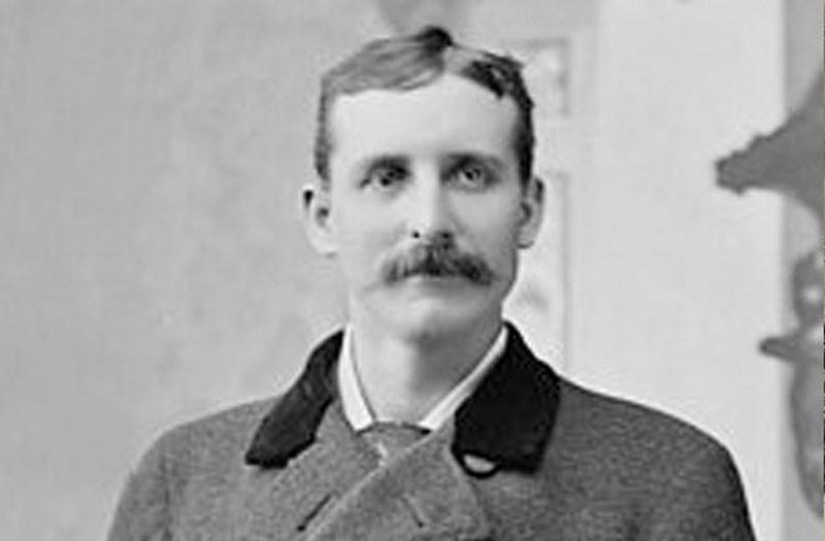
In 1993, a French daredevil named Thierry Devaux with successfully bungee jumped off the bridge eight times. As a Frenchman, Professor Robert Emmett Odlum in 1885 was not trying to commit suicide. His goal was just the opposite: Odlum was actually trying to save lives. He always loved two things: safety and performance of dangerous tricks. And one of his biggest challenges was to convince people to leave the building during a fire. When the building was on fire, to rescue it was possible to jump from the upper floors with insurance, but many feared this, believing they can suffocate during the fall. Odlum, wanting to refute this erroneous theory, jumped off a few bridges. And when Robling graduated from the Brooklyn bridge, he already knew what to do. The police were not happy with this plan, and may 19, 1885, the day of the jump Odlum, representatives of the law appeared on the site. Thousands of citizens came to see the spectacle, and alert the staff, hunting for a potential jumper, checked every car passing through the bridge. Odlum expected this, and thought of a diversion to attract the attention of the cops. While they were busy with the interrogation of man-bait, the real Odlum walked over to the railing and jumped. But everything went to plan. At the height of 30 meters, he turned around and fell into the water sideways. Help was not long in coming — the Odlum put in the boat. He woke up and asked if all went well. But it was his last words. He died because of broken ribs and a ruptured spleen, liver and kidneys. However, he proved his point: killing is not the fall and the landing.
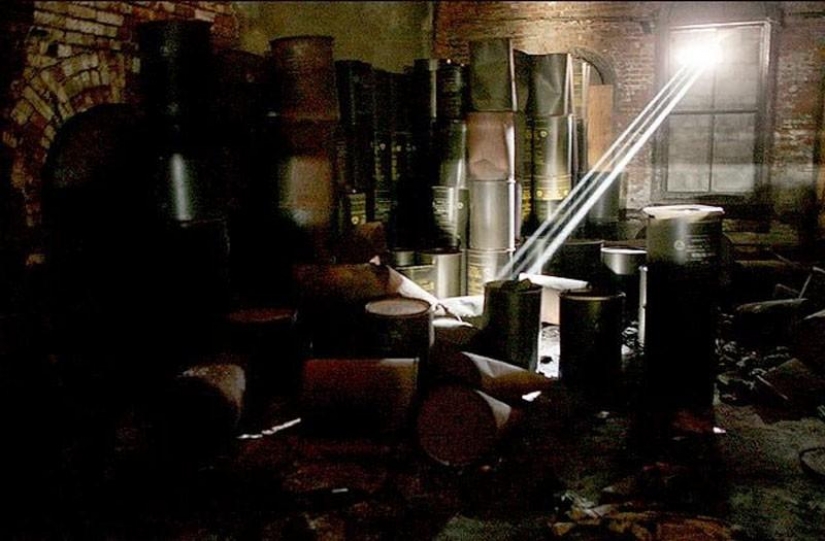
In the 1950s the nervous Americans across the country began to build shelters in case of a sudden Russian invasion. 40 years later the Soviet Union collapsed, nobody dropped an atomic bomb, and the majority of new Yorkers stopped thinking about the cold war, while a group of workers who superintended the Brooklyn bridge, has made a fascinating discovery. Inside one of the buildings at the entrance to Manhattan is a hidden room full of boxes and barrels. Many of the boxes says "For use only after enemy attack". They came across a bunker from the cold war. It was filled with everything necessary to survive a nuclear disaster. Workers found a box with medical supplies, a pile of blankets, empty metal drums for water storage or use as toilets and about 352,000 crackers. Almost all of the findings date from 1957 or 1962.
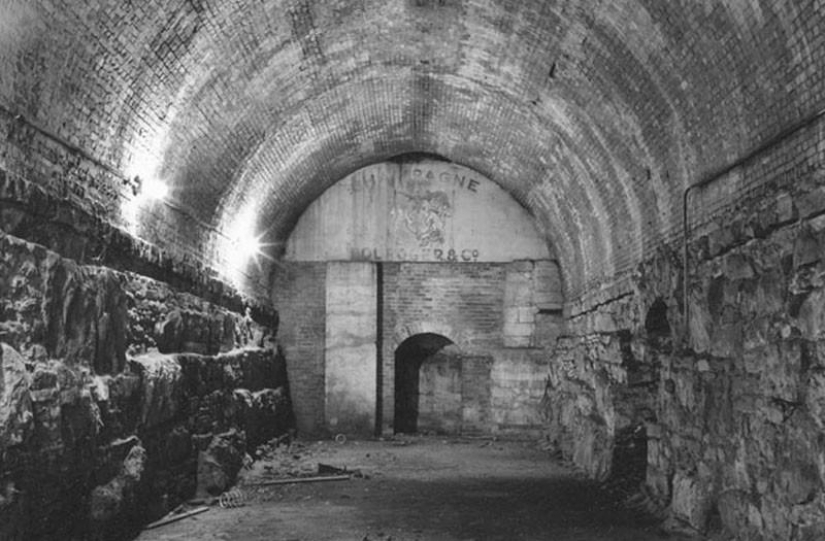
The bunker is not the only secret the Brooklyn bridge. Both sides of the ramps are hidden under the huge stone of the cave, which reaches a height of 17 meters. Today they are stored supplies, and from time to time tramps settle here for the night. And when the bridge first opened, these mysterious vaults were laid rows of bottles of champagne. Hoping to recover some of the money spent on construction, the authorities handed over the girl to rent the wine merchants who stored their goods. The basement of the Brooklyn bridge was the perfect place to store spirits: gloomy and cool, the temperature is usually about 15 degrees Celsius. During the dry law here kept the tools, but after the amendments the basement came back into the possession of merchants. Here guests came to SIP champagne to the sounds of live music. The walls were covered with a variety of phrases, some of which were in French, German and Italian. But the rest were in English as eloquent motto, which reads: "Who loves not wine, women and song is a fool." Each cellar had its own name and form. For example, one called "the Blue grotto", with the statue of the Madonna that was watching everything that happened at parties.

In 2003, one incompetent terrorist has prepared a scheme to destroy the Brooklyn bridge. He planned to use a blowtorch to cut each cable. His expectations were not fulfilled. Unfortunately, the arch terrorist, who saw the bridge was much more successful. 28-year-old Lebanese Rashid Baz was an angry young man who considered himself an Arab soldier and had a cache of weapons in his apartment in new York. The gun was not for self-defense. After the doctor named Baruch Goldstein shot 29 Muslims in the West Bank Bases armed to the teeth and went to take revenge. March 1, 1994, a van full of Hasidic teenagers, moved across the Brooklyn bridge when the Bases began to chase them. He opened fire with a machine gun for the rear window and side Windows of the van. When the weapon jammed, he pulled out a gun and kept firing until he, too, broke. Databases wounded three students and killed one 16-year-old. After the crime base, and his partner tried to escape. But soon they were overtaken by the police and Lebanese have been in court. At first he pleaded crazy, saying that on the bridge just remembered his childhood in a war-torn Lebanon. The jury don't buy this story and sentenced the killer to 141 year behind bars.
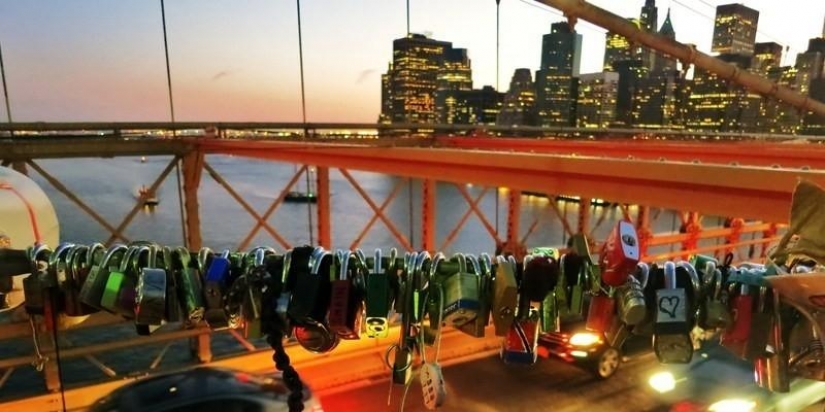
Many engaged couples have hung locks on the bridge to show your love. Locks are of different sizes and shapes, but all have one thing in common: each of them have the names of the spouses. After the lock is latched, the lovers throw the key into the East river as a sign of eternal love. But city officials are not happy about this. The bridge is a national monument, so the locks do not belong there. In addition, they can damage the bridge, as it was in Paris. So two or three times a month from there take out a huge number of castles. As of March 2014, cut off almost 5600 pieces in less than a year. Let's hope all these sweethearts are still together.
Keywords: Life bridge
Post News ArticleRecent articles

For many of us, going to the dentist is a nightmare experience. And this despite anesthesia and other modern technologies. It is ...

Talented photographer and retoucher Daria Klepikova lives and works in Moscow. Daria specializes in portrait photography and travel ...

Sometimes even great talent is forgotten. This is precisely the situation faced by the wonderful French artist Jean-Léon Gérôme, ...